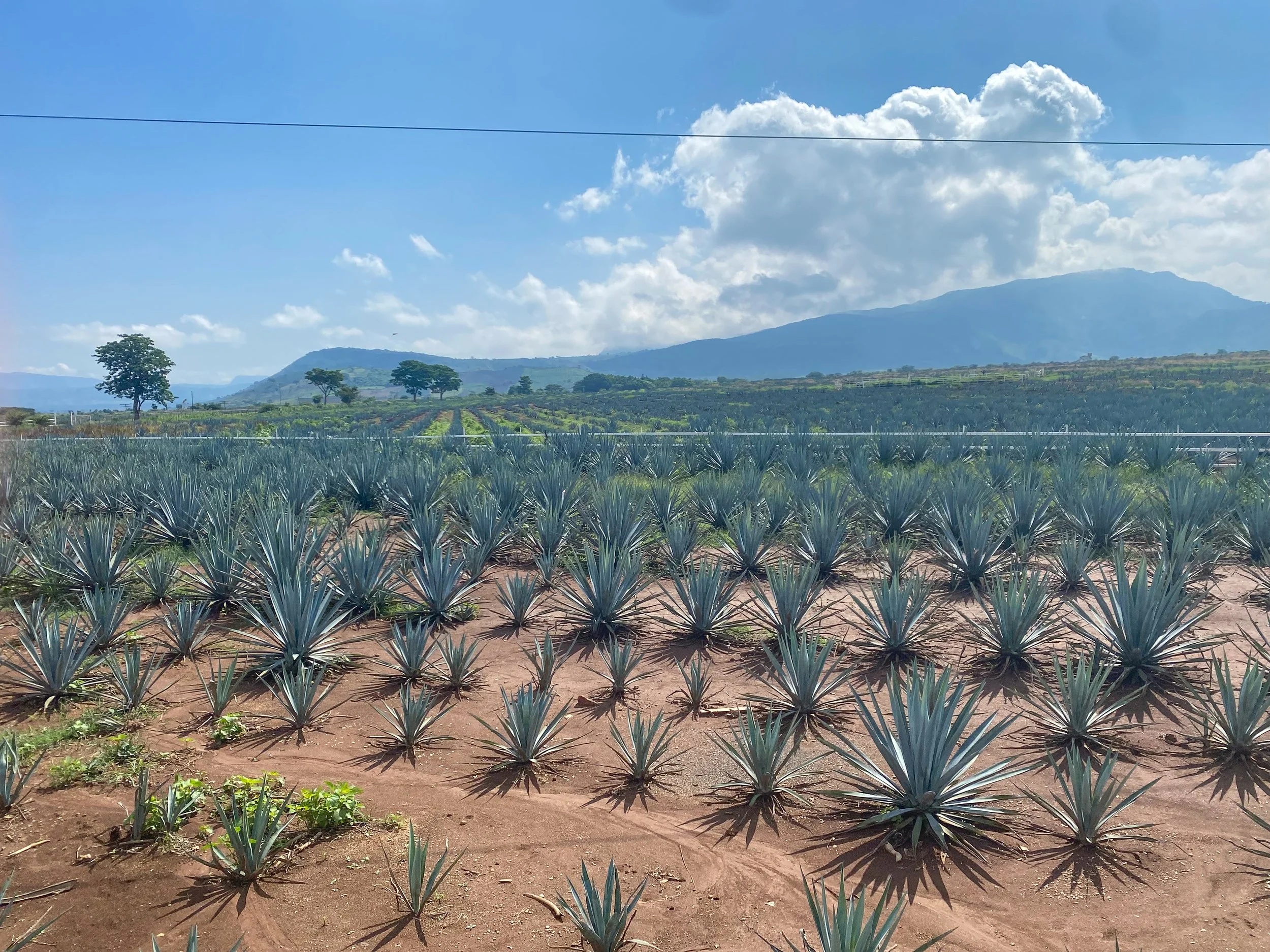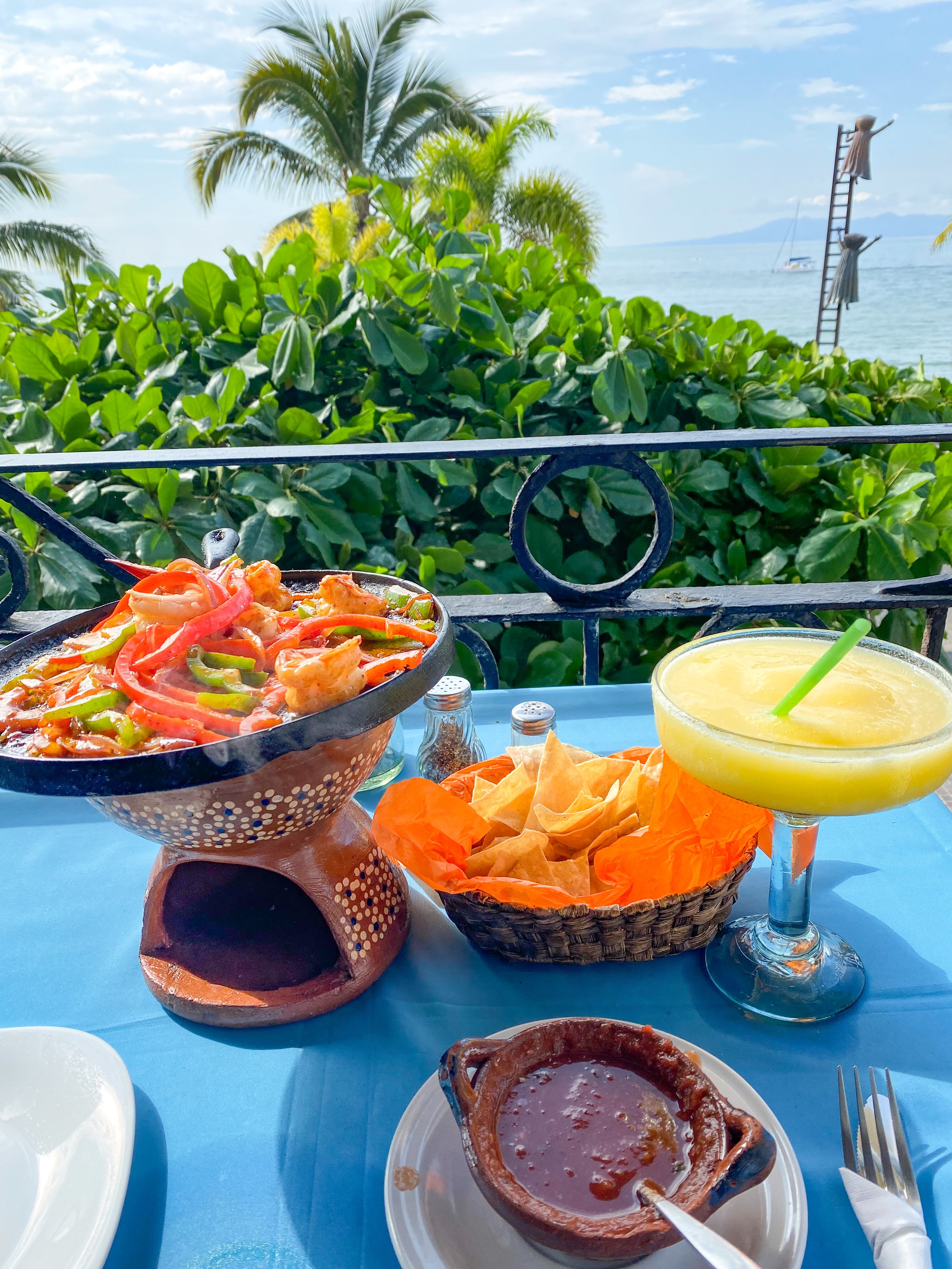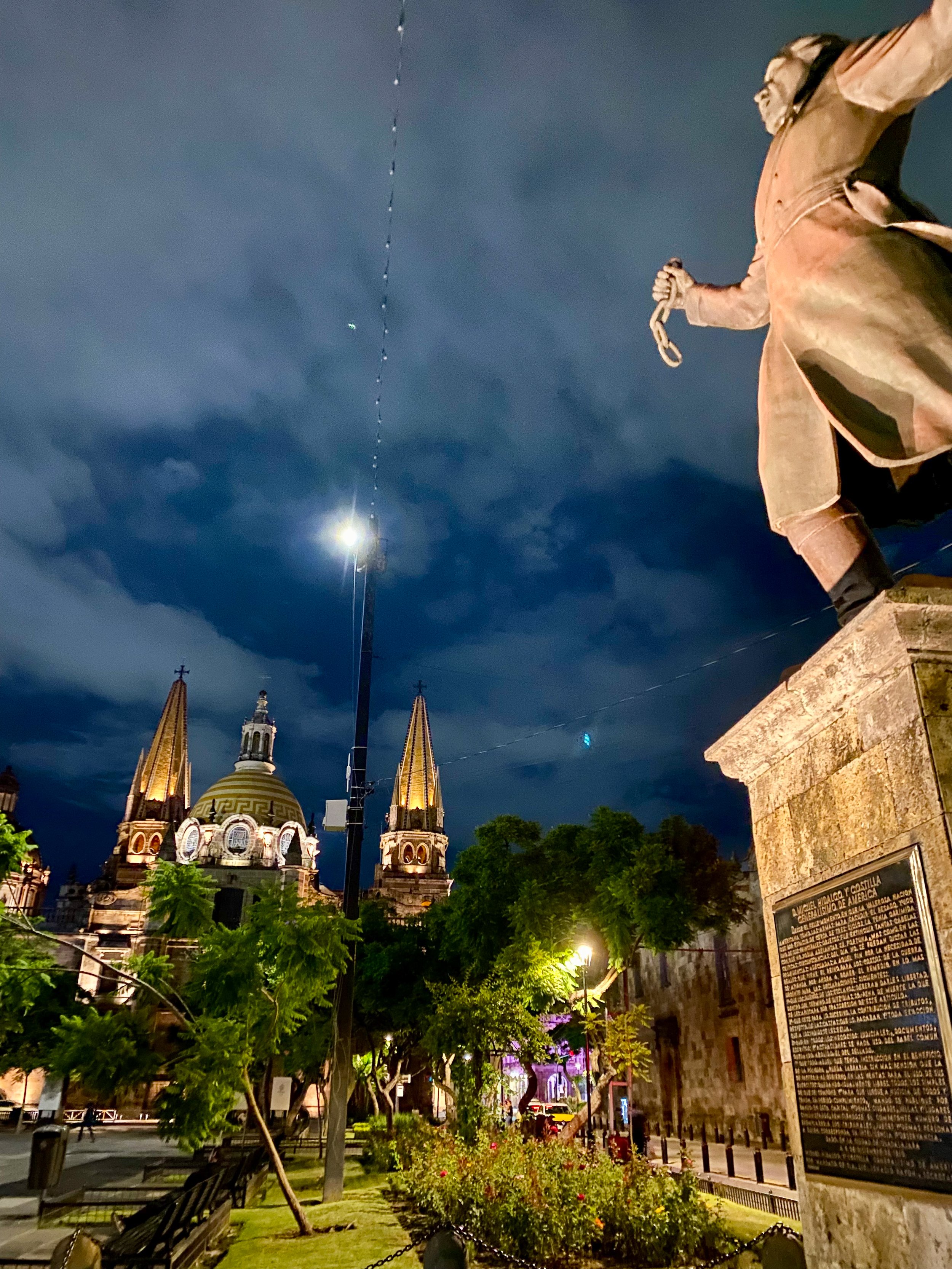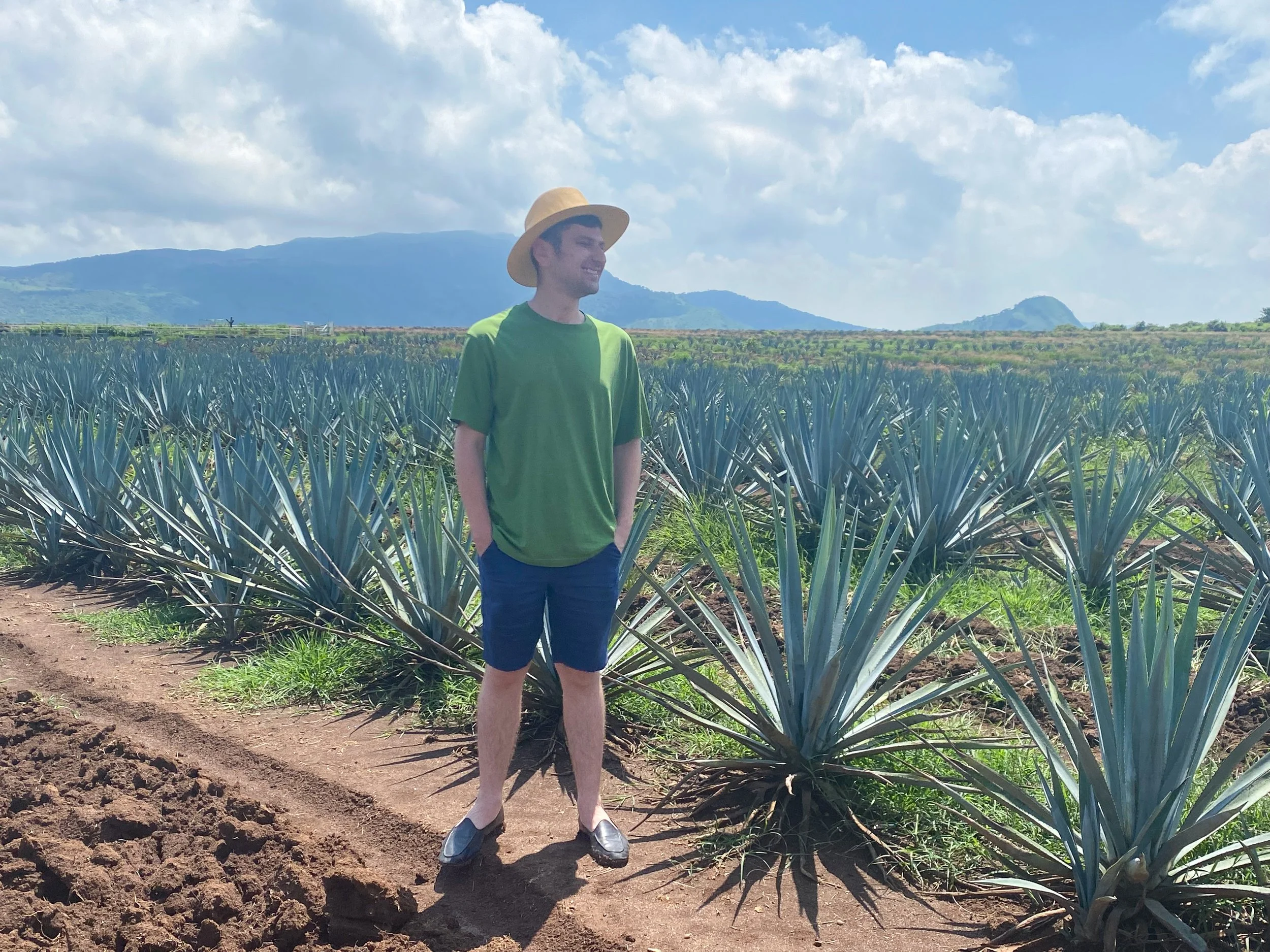Jalisco: The ‘Real’ Mexico
Jalisco: From Puerto Vallarta and Guadalajara
In October 2021, I had accumulated a few vacation days at work. I was living in Vancouver at the time and was looking for a short break somewhere by the beach. Puerto Vallarta was a perfect choice, as it was less than 5 hours away and there were direct flights with Westjet airlines.
The intent of this trip was much more of an excuse to relax, eat, drink and hang out by the beach instead of a cultural immersion type of trip. I even left my video equipment at home for that matter. Nonetheless, Puerto Vallarta does offer a bit of the latter, especially if you venture out into the surrounding mountains of Jalisco state to visit its heritage villages. All in all, Puerto Vallarta is a much more ‘authentically Mexican’ destination that has more character and a cozier feel to it than Mexico’s more popular resorts on the Mayan Riviera, such as Cancun and Playa del Carmen. Both are famous for their all-inclusive resorts and as retirement destinations, but Puerto Vallarta is the winner when it comes to price, safety, liveliness, friendly locals and an all-in-all fun time.
I booked my stay at the Garlands del Rio boutique hotel in the Zona Romantica area, the epicenter of nightlife. The hotel is located in an elegant art-deco style mansion overlooking the Quale River, which adds a lot of freshness to the extreme heat in Puerto Vallarta. While not directly at the beach, Garlands del Rio is about a 7 minute to the main promenade, El Malecon, and Playa los Muertos, the city’s principal beach. The service is outstanding, and I was upgraded to a larger room with a river-facing balcony upon arrival—all for under $80 USD per night. Sadly, Puerto Vallarta had had intense rains a few weeks prior, which causes significant damage to some buildings like the central market and the river had flown. There were rumors and videos circulating online of crocodiles lurking by the river and the beach due to the flooding.
Puerto Vallarta gained tourist popularity around the mid 20th century. Prior to that it was a small fishing town. It gained notoriety when film star Richard Burton was filming the movie The Night of the Iguana there. At the time, he was to marry someone else, but was also having an affair with Elizabeth Taylor, who moved into the resort town to be with her lover (they eventually ended up getting married and divorced twice and are one of the most famous couples from the golden age of Hollywood). The house where they stayed, Casa Kimberly, is now Puerto Vallarta’s most famous boutique hotel. Outside guests can also have lunch or dinner at the hotel’s reputable La Iguana restaurant. I tried to make a dinner reservation, but there were no spots left. It might also be worthwhile to pack at least one dressy outfit before booking, since flip flops and shorts are not allowed at the restaurant.
At daytime, much of the activity is centered around El Malecon, an oceanfront promenade that stretches for over a kilometer from the centro (old town) to the Zona Romantica. It is referred to as ‘Puerto Vallarta’s open-air museum’ because of the structures and statues along the boardwalk. The most famous one is of the fur stone arches and a seahorse, among others. Even the benches here are beautifully decorated in colorful tile mosaics.
The main attraction in the old town is the Church of our Lady Guadalupe (Iglesia de Nuestra Senora de Guadalupe). While relatively new, having been completed in 1940, the architecture blends a mix of neoclassical and baroque influences. The cupula, or round crown at the top of the church, adds a lot of beauty and originality to the building. It is also has a neat interior, so do make sure to step inside.
Playa de Los Muertos is the main city beach in Puerto Vallarta. It is easily accessible from the boardwalk, Puerto Vallarta has great seafood, and there are tons of cafes and restaurants at the entrance and along the beach. found it to be very clean and safe. It was also the first time that I got to actually swim in the Pacific Ocean, despite having lived in Vancouver for many years (where the Pacific Ocean is freezing cold even in the summer). The water had the perfect temperature. As sunset approaches, make sure to head to the Los Muertos Pier for incredible views of the ocean, the beach and the city from afar, as the tower at the end of the Pier lights up towards the night.
For those seeking a more tranquil and pristine beach experience, there are other, lesser-known beaches beyond the city center and further out. You can take a day trip by boat to Yelapa, a car-free village that combines jungle and beach activities. Another popular nearby daytrip is to the town of Sayulita in the state of Nayarit, which caters to the surfer and backpacker type of traveler. I had actually booked a guided tour of Sayulita, but I was put on the wrong bus by the tour operator, so I had to get off the bus as soon as I realized that the trip was just a hop on-hop-off city tour of Puerta Vallarta.
If you want to pick up a few souvenirs to bring back home, there are two spots worth checking out, the Mercade de Rio Quale, a tiny island within the river with souvenir shops and restaurants. It was about a three-minute walk from my hotel and there are pedestrian bridges connecting the island to the main roads. The central artisanal market had been flooded and was temporarily moved to another location. I had travelled with a small carry-on and had very little room for souvenirs. One item I did splurge on, however, was a decorative devil mask embroidered in Huichol art, or tiny colorful beads. Huichol is a traditional indigenous artform in the Jalisco and Nayarit region, and comes in many shapes and sizes (mostly depicting animals and mythical creatures). Considering how small the beads are and the time that it takes to complete a Huichol peace, it is one of the more expensive artesanias found in Mexico. My mask cost $150, but it is a centerpiece that can liven up any room with fantasy and color.
Beyond the few attractions mentioned here, there is not much else to do in Puerto Vallarta. Visistors come here to relax and party. It is a very popular hotspot with travellers from Canada and caters to a whole range of tourist: from families to honeymooners and partyers. There are bars and nightclubs on every block of the Zona Romantica, and the music and shows keep going until the early morning. For the next couple of days, I enjoyed the rowdy atmosphere and made some friends along the way.
One day trip I did take out of Puerto Vallarta was to the traditional town of San Sebastian del Oueste, which has been designated as one of Mexico’s Pueblos Magicos by the board of tourism. The sleepy town about a 2-hour drive into the mountains of Jalisco was once a thriving mining hub that exported gold, lead and silver to the resort of the world. The town’s history and remaining architecture dates back to the 18th century, when over 20 mines were established in the municipality. At its peak, San Sebastian del Oueste had a population of over 20,000. Today, only 1,000 inhabitants remain in the village. As with most Mexican towns, you can visit the main plaza and church, with a beautiful soft blue interior and arched tall ceiling, before taking a walk through the narrow cobblestone alleyways to admire the heritage houses with red brick tiles that have stood here for centuries as a testament to once thriving center of excavation and industry, before the mines were gradually shut down.
On our way to San Sebastian del Oueste, we stopped at an agave farm and distillery to sample some tequila. Jalisco is Mexico’s main producer of tequila and the drink is synonymous with fiesta and Mexican culture. However, on my next trip to Jalisco and its largest city Guadalajara one year later, I actually got to visit the town of Tequila and learn more about the process of making Mexico’s national drink.
Guadalajara: Mexico’s Most ‘Mexican City’
The same year that I took a short beach vacation to Puerto Vallarta, I was back in Jalisco to explore more of this remarkable state in Central-Western Mexico.
In August 2022, I was in-between jobs while living in Vancouver. I had less than a week left before going back to work and decided to treat myself to a vacation. I had been intrigued by Guadalajara for its cultural relevance, relatively short flight time and accessibility from Canada and its proximity to other sites of interest nearby. In total, there are 132 Pueblos Magicos in Mexico, with 9 of the being in Jalisco.
My flight with Aeromexico from Vancouver had a short layover via Mexico City. From there, it was about a 30-minute taxi ride to the city center. Despite being Mexico’s second largest city, the local airport is relatively small and I did not encounter the type of traffic found in Mexico City. Similar to Mexico City, the weather is mild, but it is important to have a sweater and jacket packed. It is also best to avoid resort attire such as shorts and flip flops to avoid attracting unnecessary attention.
I felt very safe in Guadalajara, but like with any large city, it is important to be guided by common sense and keep a close eye on all valuables. English is also not commonly spoken in Guadalajara. There are very operators that offer tours in English, and you will encounter a language barrier in most places—even with hotel staff. Don’t let that discourage you from visiting this beautiful city and region of Mexico and make sure to learn some key phrases in Spanish.
I booked 4 nights at the Hotel de Mendoza in Guadalajara’s historical district. Apart from having a swimming pool and its prime location, the hotel was pretty basic. It is less than a minute’s walk from Gudalajara’s Zocalo or main square. It is. A large public square that rivals Mexico City’s in beauty and size, with key landmarks such as the Guadalajara Cathedral, the Teatro Degallado building and the Rotonda monument-all of which are beautifully illuminated as night falls. I arrived at the hotel later in the evening and on a weekday, so I opted for some nearby tacos and a beer at a bar overlooking the square and headed back to the hotel to get some rest. Walking around the Zocalo district felt very safe at night.
Guadalajara has a population of 5 million. It is a vibrant city with many arts events, universities and tech companies. It is the epitome of what comes to mind when we think of Mexico: Mariachi bands, tequila, great food and colorful architecture. In fact, it is the birthplace of Mariachi. The state of Jalisco is also the original producer of tequila, with the nearby town of Tequila being one of the must-do things for visitors to Guadalajara.
After breakfast the next day, I took a walk around the Zocalo to admire the architecture that the historical district offers. The area is bustling with people at daytime, with many shops and cafes catering to tourists and locals. Afterwards, I booked an Uber to the district of Tlaquepaque, designated as a city in itself and one of Mexico’s pueblos Magicos.
Tlaquepaque is the largest artisanal district in all of Mexico and is a haven for anyone who loves art, handicrafts and colors. There are tons of street performers, art galleries and artisanal boutiques that sell regional specialties ranging from leather goods to ceramics and beverages along a beautiful pedestrian avenue. I had lunch the gorgeous Casa Luna restaurant in Tlaquepaque, which is a work of art in itself. The décor was spectacular with blue tiles and ornately decorated intersecting tree branches within a typical Mexican courtyard.
One dish or snack that Guadalajara is famous for is the Torta Ahogada, a type of meat submarine sandwich that is drowned in tomato sauce and served semi-wet. It did not look or sound particularly appetizing to me, so I chose to stick to more classical Mexican food while in Guadalajara.
In the evening, I took a taxi to meet my Airbnb experience host in the wanky residential district of Zapopan for an evening tour of Guadalajara. We drove through the main sites of interest along Guadalajara’s avenues including La Minerva Fountain and The Expo Guadalajra Building. The city hosts many international exhibitions, as well as the FIFA World Cup in 1970 and 1986. The tour ended right at the Zocala, by my hotel. The host was very welcoming and did her best to show us her city’s landmarks through her car, but it ended up raining hard that night, so we didn’t get to see much. Guadalajara is well planned-out and has many wide streets, which also makes it very accessible by bike.
On the next day, I booked an Airbnb tour to explore a hidden gem just on the outskirts of the city. I met my guide Edgar in Zapopan, and we drove just 10 minutes outside the city for a hike up to the Jaguar Canyon and the Huaxtla waterfalls. It was very refreshing to discover this natural wonder just outside the busy city. After a short but strenuous hike, we arrived at the waterfalls and spent the afternoon there. While it is not advisable to swim there, there are plenty of places to sit and connect with nature. We also had the place to ourselves, since it was a weekday and the Canyon and waterfalls are not on most tourist maps.
The following two days I ventured out of the city for day trips to Rural Jalisco. I booked another experience with Airbnb to discover the Lake Chapala area, and the town of Ajijic, another one of the Pueblos Magicos. Lake Chapala is the largest lake in Mexico, and the surrounding area is very popular among retirees and expats from Canada particularly, many choose the town of Ajijic as a home base. The lake itself is very large, with many towns surrounding it and three islands located within the lake. I had a tasty seafood lunch by the lake with the people from my tour group, all of whom are Mexicans. In fact, most tours in the Guadalajara area cater to local tourists and it is difficult to find tours in English. Being on a bus full of Mexicans means a lot of fun, the music and drinks kept coming as soon as we got on the bus, and they went out of their way to make sure I was singing along and having a great time.
At the lakeside restaurant, a few of us ordered a huge pitcher cocktail pitcher called Cantarito. It is very popular in this region and is made from Tequila, carbonated water and some fruit on top—served in a clay mug (or a whole clay pot in this case!). It looked like it had 10 liters in it. The Mariachi band at the restaurant made us enjoy our drinks even more. After lunch, we took a boat ride around the lake to enjoy its turquoise waters and the view of the shoreline and the many beautiful villas surrounding the lake. We also got to take a walk on a pier and enjoy the wind and the gorgeous views from there. Our last stop was the magical town of Ajijic. It draws thousands of artists, retirees and foreigners who choose to make it home. The streets are very tranquil, lined with colorful street art and have many small cafes and artisanal boutiques. It has a principal church that dates back to the 18th century, as well its own small Malecon or lake boardwalk, and offers beautiful views of the surrounding hills. If I were considering retirement, Ajijic would be a great choice.
One cannot claim that they’ve been to Guadalajara without venturing out to Tequila, the most famous town in Jalisco (if not all of Mexico). The town of Tequila is located roughly 90 minutes from Guadalajara. It is the perfect day trip from the city, but there are lots of accommodation options for those who want to stay the night after indulging in all the varieties of tequila on offer. I booked my outing to Tequila once again with Airbnb. Our first stop was the Tres Mujeres tequila factory for a tasting session.
The distillery is located in a beautiful Hacienda, complete with dark tunnels and surrounded by a striking field of blue agave that makes for a beautiful photo session. We got to learn about the distillation process of the drink from the agave plant and sampled at least 4-5 sorts. It was a particularly hot and sunny afternoon, so I decided to take it slow with the tasting and leave more room for the evening. Once again, the people on this tour were mostly local and an absolute blast to share the day with. I ended up making friends with a trio of them and we partied together back in Guadalajara in the evening.
The town of tequila itself is also beautiful to walk through, with striking architecture and a central plaza full of visitors and Mariachi performers. We had lunch at the Jose Cuervo restaurant (one of the most famous tequila brands worldwide). For those looking for more budget friendly options, the Mercado Municipal or town market also offers many varieties for lunch with seating areas.
Tequila producers must be located within the state of Jalisco to actually obtain a ‘tequila’ name certification (with the exception of a few municipalities in nearby states), so most drinks marketed in Mexico and internationally are actually produced right in the town of Tequila.
Visitors can even stay overnight in really unique glamping cabins and actual, oversized liquor storing barrels that have been converted into guest rooms. I came across plenty of those on hotel booking sites.
I usually make all my travel reservations seamlessly and error-free, with one exception. While in Guadalajara, I realized that I had booked my stay at the Hotel de Mendoza for one night less than my actual stay in the city. They were sold out on my last night there, so I had to book another option. I chose the Casona de Independencia, which was located on the Avenida de la Independencia, another lively part of the city and within walking distance to the historical center. This boutique hotel of about 10 rooms used to be an old Mexican house, which meant a beautiful courtyard and high ceilings. My rooms were recently remodeled and was very spacious, and the service was great. I would definitely recommend this little hotel if you visit Guadalajara.













































































